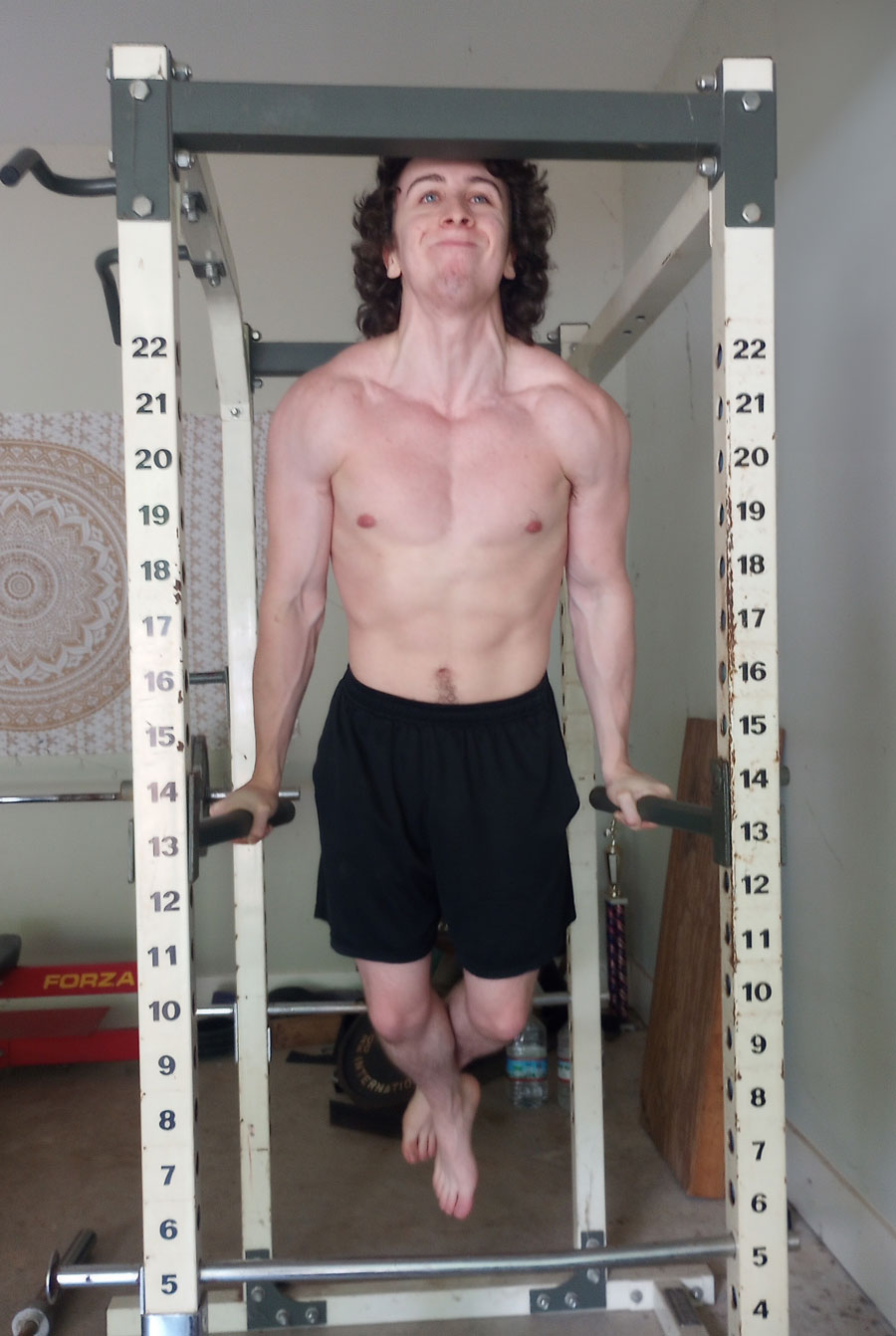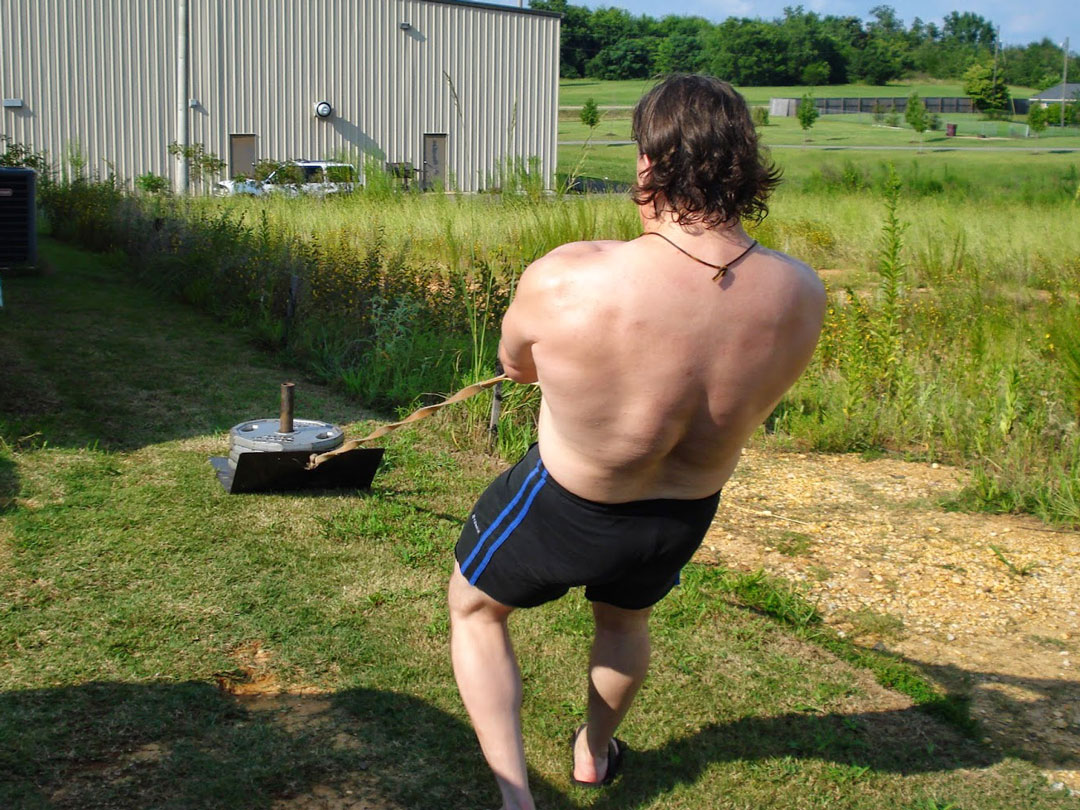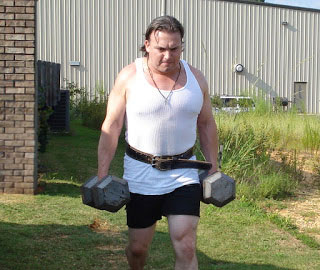The 30-Rep Program: How to Gain Considerable Strength and Size in as Little as Six Weeks
By C.S. Sloan
I have long been a fan of the
"easy strength" methods of both Dan John and Pavel Tsatsouline. Two of my favorite programs of theirs are John's "40-day workout" and Pavel’s "3 to 5 method." Eventually, I came up with my own sort of "amalgam" of these two ways of training that I call the
30-Rep Program—it contains the high-frequency of the 40-day workout but with the potential for more variety common to Pavel’s 3-to-5 methodology. I’ve now experimented with it enough, and have given it to enough lifters to "test drive," that I thought now would be a good time to write an article about it for Dragon Door.
First, we will go over some of the key tenets of the program—and, at that point, if you really wanted to, you could stop reading and go test drive it yourself—and then I’ll give you an
example program followed by some tips to make it work for your particular goals, so I still recommend sticking around to the end of the article.
The Parameters of the 30-Rep Program
Select around 8 to 10 exercises. These are the
only exercises you will perform for the entirety of the program. These should all be basic, "bang-for-your-buck" movements. If you’re already thinking squats, overhead presses, and heavy pulls, then you’re on the right track. Here’s my list when I run the program:
- Barbell squats (back squats, front squats, or bottom-position squats)
- Bench presses (including bottom-position bench presses and board presses of various heights)
- Weighted Dips
- Barbell overhead presses
- One-arm dumbbell overhead presses
- Deadlifts (sumo, conventional, deficit, rack pulls)
- Power cleans
- Power snatches
- Chins (wide-grip, close-grip, undergrip, etc.)
- Barbell curls
Yeah, yeah, I know. That is technically more than 10 movements if you include the variations of squat, bench press, deadlift, or chins. If you’re new to power training, then you may want to not perform any variations, but if you’re an advanced lifter, then the variety will be a welcome break and it will ensure that your lifts continue to go up-and-up so long as you're focusing on your weak points. By the way, you can also combine two of the exercises and count that as one lift. In other words, you could clean and press or you could do something such as a deadlift curl (a really great exercise that doesn’t get enough attention.)

At each workout, pick three of the exercises to train. (Make sure that your workout session is balanced—i.e., it works your entire body—so don’t just select, for example, bench presses, dips, and chins.) For each exercise, do no more than 10 reps. (You also need to warm up properly, but we’ll get to that shortly.) Set/rep ranges could include 2 sets of 5 reps, 5 sets of 2 reps, 3 sets of 3 reps (I know it’s not 10 reps, but it’s close enough), or 3 sets of 5, 3, then 2 reps. This works out—pun firmly intended—to 30 reps total for the workout.
Train at least 5 days-per-week, but no more than 6. Most of the time I like to run a 3-on, 1-off, 2-on, 1-off training rotation just so that I train on the same days each week. For instance, you might train Monday, Tuesday, Wednesday, Friday, and Saturday, with Thursdays and Sundays off each week. You could also just train 3-on, 1-off constantly, or even 2-on, 1-off if you know that you respond best to a little less training. (On a side note, however, more is not always better but it usually is, so don’t be lazy!) On the flip side of that, there’s nothing wrong with training six days straight, then taking off for the Sabbath, even if you plan on doing little else for your day off other than watch football and drink beer, but I like football watchin’ and beer drinkin’, so there’s that.
Perform more squats, quick lifts (power cleans, snatches, etc.), and overhead work than chins, curls, bench presses, or deadlifts. I look at it this way: you can train the squats, the quick lifts, or the overhead lifts anywhere between 4 and 6 days-per-week. The bench presses, chins, and curls can be trained between 2 and (occasionally as much as) 4 days-per-week. And the deadlift variants can be trained between 1 and 2 days-per-week. The "Bulgarian method," for example (where you max out on the same lift every single training day), works when your exercise selections are squats, snatches, or clean-and-jerks (which is why it is so great for Olympic lifters) but not so much when it’s bench presses or deadlifts. This recommendation also comes from personal experience.
Around 20 years ago, I eventually reached the point where I could squat and deadlift over 600 pounds in the 181-pound division. My best squat was 620, and my best deadlift was 605. Anyway, I always squatted between 3 to 4 days each week, but I only deadlifted once each week, and sometimes not even that much. I realize that you do see lifters deadlift more frequently than that, and I’m not saying that it can’t be done (I experimented with it several times), but I still think most lifters would do well if they limited their deadlift training to 2-days-per-week at the maximum. The exception to this rule could be if you’re doing a lot of thick-bar work on your heavy pulls. You could do more frequent thick-bar deadlifts simply because of your inability to use a really heavy load.
Slowly increase the weights you use over the course of running the program. You should go heavy "naturally" as John says in his easy strength programs. No need for getting psyched up or using any pre-workouts. You will find, oddly enough, that you get stronger without even trying to get stronger.
When you finish training your 3 lifts for the day, add a finisher. The finisher can be either an "odd lift" such as farmer’s walks, sled drags, or sandbag carries or it can be a kettlebell movement for high reps. I personally like to alternate between the two.

An Example Program
As mentioned, if you wanted, you could stop reading right now and head to the gym to start training, but when I first wrote about this program on my blog, without an example program attached to the essay, I was surprised by the amount of emails that I received from people asking me to critique the 30-rep program they put together. And almost to a T, every one of the programs were decidedly not what-the-heck I had recommended. So to make sure we don’t have to rectify that here, what follows is an example of a couple weeks of training. After that, I’ll give you a few more tips before we call it quits.
Before you start each workout, make sure you warm up properly but this doesn’t mean you should do too much. These workouts are short. Your warm-up should be short. I typically do about 50 bodyweight squats (maybe even a few kettlebell squats) and a few pushups for around 20 reps (plus mobility work as needed).
Week One
Day One:
- Squats: 2 sets of 5 reps
- Power Cleans: 2 sets of 5 reps
- Bench Presses: 2 sets of 5 reps
- Sandbag Carries: 1 set for distance
Day Two:
- Bottom-position Squats: 2 sets of 5 reps
- Deadlifts: 5 sets of 2 reps
- Barbell Overhead Presses: 2 sets of 5 reps
- Kettlebell Swings: 1 to 2 sets of 20 to 50 reps
Day Three:
- Squats: 3 sets of 3 reps
- Power Snatches: 3 sets of 3 reps
- Weighted Chins: 2 sets of 5 reps
- Farmer’s Walks: 1 set for distance
Day Four: OFF
Day Five:
- Front Squats: 2 sets of 5 reps
- Bench Presses: 5 sets of 2 reps
- Power Cleans: 5 sets of 2 reps
- Kettlebell Swings: 1 to 2 sets of 20 to 50 reps
Day Six:
- Squats: 5 sets of 2 reps
- One-arm Dumbbell Overhead Presses: 3 sets of 3 reps (each arm)
- Deficit Deadlifts: 2 sets of 5 reps
- Sled Drags: 1 set for distance
Day Seven: OFF
Week Two
Day One:
- Bottom-position squats: 3 sets of 3 reps
- Power Cleans: 5 sets of 2 reps
- Barbell Curls: 2 sets of 5 reps
- Kettlebell Swings: 1 to 2 sets of 20 to 50 reps
Day Two:
- Squats: 2 sets of 5 reps
- Power Snatches: 5 sets of 2 reps
- Barbell Overhead Presses: 5 sets of 2 reps
- Sandbag Carries: 1 set for distance
Day Three:
- Front Squats: 5 sets of 2 reps
- Bench Presses: 2 sets of 5 reps
- Deadlifts: 5 sets of 2 reps
- Kettlebell Swings: 1 to 2 sets of 20 to 50 reps
Day Four: OFF
Day Five:
- Squats: 2 sets of 5 reps
- Power Cleans: 5 sets of 2 reps
- Weighted Chins: 3 sets of 3 reps
- Farmer’s Walks: 1 set for distance
Day Six:
- Bottom-position Squats: 5 sets of 2 reps
- Power Snatches: 5 sets of 2 reps
- One-arm Dumbbell Overhead Presses: 3 sets of 3 reps
- Sled Drags: 1 set for distance
Some Thoughts and Tips on the Program
For the 2 sets of 5, these should be done with the same weight for both sets. Pick a weight where you could probably do 8 to 10 reps without straining. The key is to make the 2 sets of 5 reps easier and easier as the workout goes on. Slowly add weight to your 2x5 over the program.
The 3 sets of 3 reps can be done with something a little heavier, but not by much. Use the same weight on all 3 sets.
The 5 sets of 2 are a little different. For this one, start the first set of 2 reps with whatever weight you would use for your 2 sets of 5 and do 5 progressively heavier sets of 2 reps. You MUST get your last double, but you can still "push it" a little more here than on the other set/rep combinations. Typically, after a couple of workouts for a particular lift where I do 2 sets of 5 reps or 3 sets of 3 reps, I then like to "test" my strength a little bit with the 5 sets of 2 set/rep range.
Although I didn’t list it in the example program above, you can also do a scheme of 3 sets of 5, 3, and 2 reps. If you choose that then, as with the 5 sets of 2, start with the weight you used for your 2 sets of 5. Add weight and do a set of 3 reps. And then add some more weight and get a set of 2 reps. But, once again, you MUST get that double.
If you stick with this program for at least 6 weeks, I can guarantee that you will gain a considerable amount of strength. You may even break some personal records. I had a lifting friend who completely scoffed at the program when I outlined it to him, but he desperately wanted something new and different for training, so he decided to give it the ol’ College try. He wasn’t laughing a few months later when he had increased his squat and deadlift by (around) 100 pounds, and put 30 pounds on his best bench press.
For some of you, it may also cause gains in hypertrophy. I have long thought that, when it comes to hypertrophy training, some lifters respond better to volume, some to intensity, and some to frequency. The reason I think this is because I respond best to frequency for muscle growth as opposed to volume or intensity. When I began training in the mid 1980s, for instance, you only read about two ways of training. Your two options were either high-volume "bodybuilding" workouts for multiple sets multiple days per week or brief, infrequent, "intense" workouts such as the ones touted by Arthur Jones, Mike Mentzer, and (for lifters) Ken Leistner.

I tried both styles for years and neither really worked for me. But when I started performing frequent "grease-the-groove" powerlifting workouts in the late ‘90s, I was surprised how difficult it was for me to stay in my weight class. I was gaining muscle without even trying to gain muscle. And then when I stopped powerlifting a decade-and-a-half later, I began to do the exact same workouts I’m writing about here and got the biggest I’ve ever been in my life. Interestingly enough, this was when I was around 40 years old and didn’t think I would be able to gain muscle mass very easily.
As mentioned, stick with the program for at least 6 weeks, but probably no more than 8 weeks. Maybe it’s just boredom, but 8 weeks seems about the limit for this sort of training. After that, do something such as a heavy-light-medium program (which I’ve written about before on Dragon Door) or maybe even just a 2-days-per-week program. I’ve found, after 8 weeks on the 30-Rep Program, for instance, that a lot of lifters do well with something as simple as training their bench presses and squats on Monday, and then their deadlifts and bench presses on Thursday for little other than 5 sets of 5 reps. But anything similar would work.
Make sure that—as with any program—you are getting enough protein on a daily basis (and calories if you’re trying to gain weight), enough rest at night, and not "overdoing it" with needless activities outside of the gym. And if you’ve never tried any "easy strength" method of training before, you might be really surprised with how strong you get on such a (seemingly) benign program.
Good luck and good training.
 C.S. Sloan is a freelance writer, martial artist, and former competitive powerlifter and fighter. He holds a 4th degree black belt in Isshin-Ryu Karate-Do and a 1st degree black belt in ITF Taekwondo. He is a former contributing editor for IronMan Magazine, MuscleMag International, and Planet Muscle Magazine. You can visit his website at cssloanstrength.blogspot.com where he writes on old-school strength training, classical bodybuilding, and traditional martial arts.
C.S. Sloan is a freelance writer, martial artist, and former competitive powerlifter and fighter. He holds a 4th degree black belt in Isshin-Ryu Karate-Do and a 1st degree black belt in ITF Taekwondo. He is a former contributing editor for IronMan Magazine, MuscleMag International, and Planet Muscle Magazine. You can visit his website at cssloanstrength.blogspot.com where he writes on old-school strength training, classical bodybuilding, and traditional martial arts.
Back